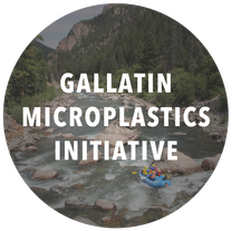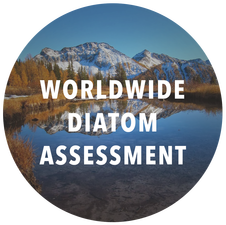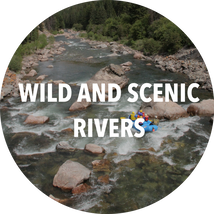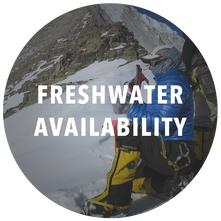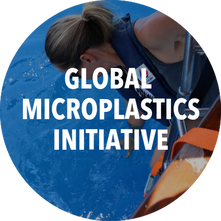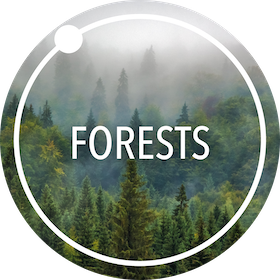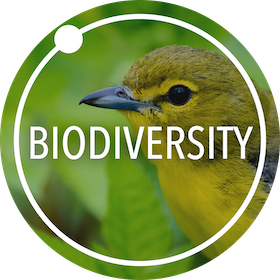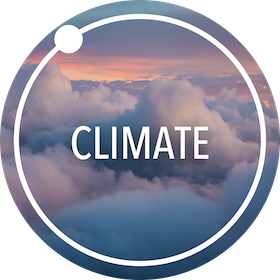Freshwater
The quantity and quality of freshwater on Earth are not only vital to sustaining healthy ecosystems but also crucial for human food security and health. However, the world’s water withdrawals are expected to exceed the global renewable water supply by as much as 2,680 cubic kilometers annually by 2030.
How We Have Impact
Adventure Scientists collaborates with land managers and communities to better understand issues of water quality and quantity, as well as provide crucial information to mitigate the effects of climate change and manage freshwater ecosystems for a sustainable future.

Our work promoting water quality includes:
- Collecting water samples and utilizing in-situ sensors across large numbers of rivers
- Conducting rapid assessments of Harmful Algal Blooms (HABs)
- Measuring concentrations of pollutants such as microplastics across waterways
- Invasive species monitoring
- Biodiversity monitoring
Our work securing water quantity includes:
- Ground validating snowpack data
- Collecting glacial samples to understand the rates and causes of melting
- Providing data and resources to develop drought-resistant GMOs
Our Work With Freshwater
Project Portfolio
Scientific Publications
Global Microplastics Initiative
Lima, A.R.A., et al. 2021 “Global Patterns for the Spatial Distribution of Floating Microfibers: Arctic Ocean as a Potential Accumulation Zone.” Journal of Hazardous Materials. 403: 123796.
Montoto-Martínez, Tania, et al. “Pump-Underway Ship Intake: An Unexploited Opportunity for Marine Strategy Framework Directive (MSFD) Microplastic Monitoring Needs on Coastal and Oceanic Waters.” PLOS ONE, Public Library of Science, 8 May 2020.
Rasmussen, Lisa M. “When Citizens Do Science: Stories from Labs, Garages, and Beyond.” Narrative Inquiry in Bioethics, Vol. 9 No. 1, 2019, p. 1-4. Project MUSE, doi:10.1353/nib.2019.0001.
Barrows, Abigail P.W., et al. “Marine Environment Microfiber Contamination: Global Patterns and the Diversity of Microparticle Origins.” Environmental Pollution, Elsevier, 26 Feb. 2018.
Waller, Catherine L, et al. “Microplastics in the Antarctic Marine System: An Emerging Area of Research.” Science of the Total Environment, Elsevier B.V., 2017.
Pate, J.A., and E.E. McKinnon. “A Citizen Engagement Approach to Water Advocacy: Experiences from ‘EXXpedition Great Lakes.’” Taylor & Francis, Informa UK Limited, 22 Nov. 2016.
Barrows, Abigail P. W., et al. “Grab vs. Neuston Tow Net: a Microplastic Sampling Performance Comparison and Possible Advances in the Field.” Analytical Methods, The Royal Society of Chemistry, 4 Oct. 2016.
Haab, Samantha, and Kimberly Haab. “The Environmental Impacts of Microplastics: An Investigation of Microplastic Pollution in North Country Waterbodies.” St. Lawrence University, May 2016.
Gallatin Microplastics Initiative
Barrows, Abigail P.W., et al. “A Watershed-Scale, Citizen Science Approach to Quantifying Microplastic Concentration in a Mixed Land-Use River.” Water Research, Pergamon, 8 Oct. 2018.
Worldwide Diatom Study
Bahls, Loren L. “The Role of Amateurs in Modern Diatom Research.” Taylor & Francis, Informa UK Limited, 20 Dec. 2014.
Bahls, Loren L. “Neidiopsis Hamiltonii Sp. Nov., N. Weilandii Sp. Nov., N. Levanderi and N. Wulffii from Western North America.” Taylor & Francis, Informa UK Limited, 6 Mar. 2014.
Bahls, Loren L. “New Diatoms from the American West-A Tribute to Citizen Science.” Proceedings of the Academy of Natural Sciences of Philadelphia, The Academy of Natural Sciences of Philadelphia, 1 Mar. 2014.
Bahls, Loren L. “Kurtkrammeria, a New Genus of Freshwater Diatoms (Bacillariophyta, Cymbellaceae) Separated from Encyonopsis.” Nova Hedwigia, Schweizerbart’sche Verlagsbuchhandlung, 1 Aug. 2015.
Snow and Ice
Carey, Mark, et al. “Climbing for Science and Ice: From Hans Kinzl and Mountaineering-Glaciology To Citizen Science in the Cordillera Blanca.” Revista De Glaciares y Ecosistemas De Montaña.
Earned Media
Sustainable Development Goals
Focus on Freshwater aligns our work with the United Nations Sustainable Development Goals.

